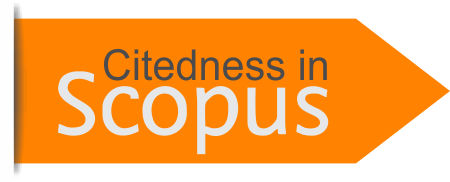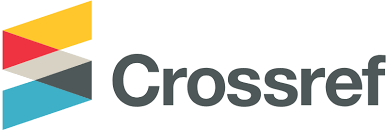Content Analysis of Comics on Line Webtoon
Abstract
Keywords
Full Text:
PDFReferences
Acuna, Kirsten. 2016. ‘Millions in Korea Are Obsessed with These Revolutionary Comics — Now’. Retrieved (https://www.businessinsider.com/what-is-webtoons-2016-2?IR=T).
Andriyanti, Trisna, Adek Cerah, and Kurnia Azis. 2023. ‘Kajian Visual Webtoon “ Save Me ”’. Unimed 19(2 januari-juni 2023):1–5.
Arianti, Andini Setya. 2019. ‘Drawing Styles Visual Analysis of Indonesian Action Comics’. ARTic 3(1968):93–101. doi: 10.34010/artic.v3i0.2484.
Cho, Heekyoung. 2016. ‘The Webtoon: A New Form For Graphic Narrative’. The Comics Journal.
Duncan, Randy, Matthew J. Smith, and Paul Levitz. 2015. The Power of Comics : History, Form and Culture. London: Bloomsbury Academic.
Eisner, Will. 1985. Comics and Sequential Art: Principles and Practices from the Legendary Cartoonist. New York: W. W. Norton & Company.
Febriani Setiawati Prasetya, Xenanta, and Meirina Lani Anggapuspa. 2022. ‘Analisis Visual Desain Karakter Xiao Dalam Game Genshin Impact’. Jurnal Barik 4(2):185–98.
Hengrisky, Giog Aura. 2024. ‘Analisis Preferensi Masyarakat Dalam Memilih Komik Sebagai Bacaan’. Tuturrupa 6(1):51–58. doi: 10.24167/tuturrupa.v6i1.11276.
Imawan, Khaerudin. 2019. ‘Instagram as the Dispute Arena of Personal Branding of Local Head Candidates in West Java Province at 2018’. 306:132–38. doi: 10.2991/isseh-18.2019.32.
Lestari, Aghnia Dian. 2019. ‘Video Blogging (Vlogging) Sebagai Bentuk Presentasi Diri’. Jurnal Signal 7(1). doi: 10.33603/signal.v7i1.2010.
Luthfi, Alifia Hanifah. 2020. ‘Analisis Semiotika Kritik Sosial Dalam Balutan Humor Pada Komik Faktap’. Jurnal ILMU KOMUNIKASI 17(1):19–40. doi: 10.24002/jik.v17i1.1968.
Maharani, Maurinsa, Suryati Suryati, and Manalullaili Manalullaili. 2024. ‘Analisis Desain Komunikasi Visual Karakter Jing Yuan Dalam Game Honkai Star Rail’. Jurnal Bisnis Dan Komunikasi Digital 1(2):13. doi: 10.47134/jbkd.v1i2.2281.
Mayfield, Antony. 2008. ‘What İs Social Media?’ Icrossing 1–36.
McCloud, Scott. 2006. Making Comics : Storytelling Secrets of Comics, Manga and Graphic Novels. New York: Harper.
McCloud, Scott. 2012. ‘Understanding Comics : The Invisible Art’. Films Media Group
Medina, Zahra, Maylanny Christin, and Ruth Mei Ulina Malau. 2016. ‘Motif Pengguna Aplikasi Line Webtoon (Studi Deskriptif Kuantitatif’.
Moleong, Lexy J. 2009. Metodologi Penelitian Kualitatif. Bandung: PT. Remaja Rosdakarya.
Patricia, Florens Debora. 2018. ‘Analisis Semiotika Komunikasi Visual Buku “Memahami Komik” Scott McCloud’. Jurnal Studi Komunikasi (Indonesian Journal of Communications Studies) 2(2):278–89. doi: 10.25139/jsk.v2i2.702.
Putri, Destya Maya. 2018. Pengaruh Media Sosial Line Webtoon Terhadap Minat Membaca Komik Pada Mahasiswa Universitas Riau. Vol. 5.
Sinurat, Hebron, and Onggal Sihite. 2023. ‘Studi Visual Komik Si Ujang Dan Bapaknya Berdasarkan Teori’. Gestus Journal : Penciptaan Dan Pengkajian Seni (GSTS) 03(1):1–11. doi: 10.24114/gsts.v2i2.45667.
Subejo, Subejo, Nurul Chamidah, Nirmalasari Nirmalasari, Suyoto Suyoto, Sunarru Samsi Hariadi, Muhamad Muhamad, Apredeah Monica Selvi, Dedi Muhammad Siddiq, Khaerudin Imawan, and Isamayana Isamayana. 2021. ‘Strategi Komunikasi Dan Pemanfaatan Teknologi Informasi Dan Komunikasi Dalam Pengembangan Ketahanan Desa Wisata Pada Masa Pandemi Covid-19 Di Cirebon’. Jurnal Ketahanan Nasional 27(1):90. doi: 10.22146/jkn.61859.
Zagita, Nadia Istiani, and Rudi Sukandar. 2021. ‘Pandangan Masyarakat Indonesia Terhadap Budaya Korea Selatan: Studi Kasus Manhwa Noblesse Pada Aplikasi Line Webtoon’. COMMENTATE: Journal of Communication Management 1(1):78. doi: 10.37535/103002120216.
DOI: https://doi.org/10.46336/ijbesd.v5i4.724
Refbacks
- There are currently no refbacks.
Copyright (c) 2025

This work is licensed under a Creative Commons Attribution 4.0 International License.
Published By:
IJBESD: Jalan Riung Ampuh No. 3, Riung Bandung, Kota Bandung 40295, Jawa Barat, Indonesia
IJBESD Indexed By:
 This work is licensed under a Creative Commons Attribution 4.0 International License.
This work is licensed under a Creative Commons Attribution 4.0 International License.






.png)



